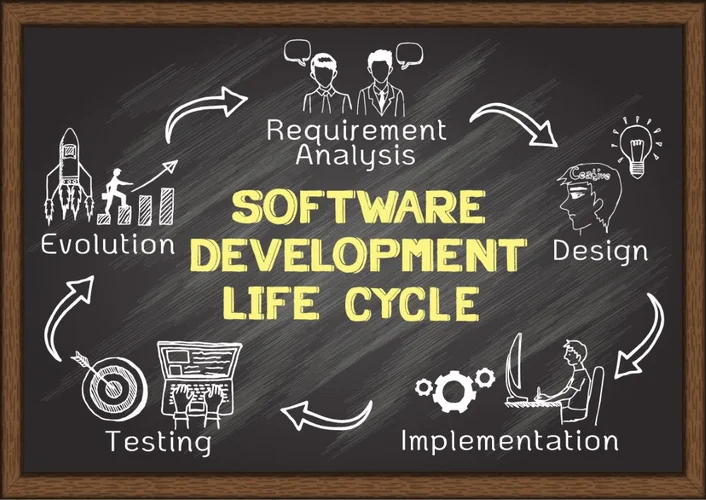BaaS, nevertheless, often includes a extra direct relationship between the fintech business and its customers because the business functions like a financial institution to some extent https://www.cyber-life.info/lessons-learned-about-17/. As a outcome, businesses offering BaaS are topic to more regulatory oversight, licensing necessities, reporting obligations, and necessities for in-house compliance officers. Embedded finance and BaaS eliminate the need for intermediaries in traditional monetary establishments.
Financial Trade Outlook On Open Banking And Baas
Open banking also allows a “banking as a platform” approach that consolidates the numerous features of banking right into a unified, adaptable hub. With an open API infrastructure at its core, an establishment can more readily “plug-in” new options and offerings corresponding to digital banking, faster payments and digital lending. While it’s potential to set up a internet site and cellular application, banking rules and compliance necessities are rigorous to turn into a bank in the United States. BaaS solutions lets businesses offer banking companies like a standard financial institution.

Advantages For Financial Institution And Non-bank Firms

But open banking and BaaS even have a lot in frequent, including their capacity to create new opportunities beyond traditional banking. Starling differs from traditional BaaS suppliers, like Solaris, as it was not initially a BaaS provider. Starling is an instance of a financial institution with a modern core expanding into BaaS providers. Banking as a Service, Banking as a Platform, and Open Banking are phrases that have turn out to be frequently prevalent within the financial lexicon. In this article, we are going to break down the definitions of every of these terms, including some examples and use circumstances, whereas additionally exploring what they imply for the monetary companies sector as an entire. Imagine that you have accounts with a quantity of banks and you want to keep monitor of your balances and transactions in one place.
Banking-as-a-service Business Outlook

We are proud to offer a frictionless end-to-end financing expertise via our next-gen point of sale financing platform. The primary difference between BaaS and open banking is what is being shared by way of each know-how. In essence, FIs can management their own destiny through the use of extensibility to entry and deploy the latest technologies at speed and scale and finally enhance the client expertise. These terms are generally used interchangeably in dialog, which finally ends up in confusion. While these phrases are associated in some capacity, they each have their own distinct purposes and qualities. Open banking helps streamline knowledge circulate securely, following customer consent protocols, and is regulated by frameworks like GDPR in Europe and the Consumer Data Right (CDR) in Australia.
Highly Effective Knowledge And Analysis On Practically Every Digital Topic
Their ability to integrate these financial providers has reworked them into tremendous apps, catering to virtually each facet of a consumer’s financial journey. Banking as a Service (BaaS) operates under the open banking umbrella, providing a radically totally different approach to financial services. It allows fintech companies to provide a comprehensive suite of monetary services with out constructing and sustaining their very own banking infrastructure. Instead, they can associate with conventional banks, which provide the mandatory infrastructure and regulatory licenses. BaaS (Banking as a Service) refers to a model where banks provide their banking infrastructure and companies to third-party companies to use and incorporate into their very own services.
- In truth, small to mid-size banks, particularly community banks, can (and should) start considering these alternate types of banking.
- Potential services include financial institution accounts and invoice payments to digital wallets, buy now pay later and prepaid card issuance.
- Open banking refers back to the practice of allowing third-party financial service suppliers access to consumer banking knowledge through APIs (Application Programming Interfaces), however only with the customer’s express consent.
- So, in API banking, the tools and providers of the bank are made obtainable to a 3rd get together in the form of APIs.
- And by having the right vendor relationships on your side, you can readily broaden your bank’s products portfolio, develop your business, and sustain with the massive players in the trade.
Using open banking, service suppliers have been capable of aggregate and analyse data and thus build accurate shopper profiles. As a result, they are in a position to provide consumers extra related companies and enhance the overall buyer experience. Fintech companies can present on-line banking providers to shoppers by way of BaaS in addition to offering services that help people track their incoming and outgoing transactions.
While many of these banking models could seem comparable, they actually have key differences. Therefore, it is essential to understand how every mannequin differs and what advantages every model presents. Open banking and open finance create a safe ecosystem for which knowledge and payments can transfer between parties. Banking as a Service, APIs, and Open Banking, all relate to a single concept of granting third-party access to banks’ data and credentials so as to create new products and improve client experiences. BaaS allows third-party entry to the bank’s capabilities while including APIs and open banking.

Embedded finance allows corporations to access and make the most of financial providers supplied by third events. This, in itself, just isn’t new – consider that retail shops have supplied branded bank cards for years, like Macy’s or Costco. As embedders and financial establishments proceed to explore the chances of open banking, it’ll likely develop even closer to embedded finance. It already makes sense for them to work collectively – there are clear common goals in levelling out access to financial companies, and offering end customers with innovative options to issues which have long been ignored. Ultimately open banking and embedded finance are aiming on the similar downside – the democratisation of monetary services.
But while open banking permits third-party entry to the customer’s data, BaaS allows third-party access to the bank’s functionality. Hence, BaaS banking includes both open banking and API banking as a end result of it requires APIs for accessing performance beneath the open banking framework. As you’ll be able to see, these extensibility ideas have the ability to drive innovation, improve account holder offerings, and expand the reach of banking companies. With FIs beneath fixed pressure to deliver new products and services, extensibility permits them to continue configuring their digital banking platform whenever they need new options and features.
I addContent her story and illustration to Google Classroom for her teacher to evaluate, after which I get again to my work. And I’m a colleague that’s always there to help out when she needs some clarification. You’ll be the primary to gain access to the latest insights, trends, useful suggestions, and finest practices shared by KMS consultants within the BFSI subject. Watch our on-demand webinar for added perception into maximizing the power of open banking trends to drive your institution’s success. The business agreements of BaaS suppliers will inevitably cut back profitability, and the complexities of decoupling usually result in vendor lock-in. PayMint is a one cease shop for SMEs who’s seeking to streamline their monetary service through one window.
These companies can offer financial institution accounts, debit playing cards, or fee processing services without having to turn out to be licensed banks themselves. Banking as a Service (BaaS) is emerging as a key answer for assembly the growing digital banking demands of shoppers. By permitting non-bank companies to combine complete banking services immediately into their platforms, BaaS enables a seamless person expertise. Consumers can entry banking providers with out leaving their favorite apps, whether or not they are shopping, touring, or managing their funds. This integration makes banking more accessible and convenient, enhancing user satisfaction and engagement.
For fashionable users, these user-friendly on-line companies could be extra convenient and accessible than traditional banking models. Embedded finance models mostly target a broad buyer base, with a strong give consideration to comfort and feature-rich experiences. BaaS has a more specialized target market, together with those who are dissatisfied with traditional banking choices, require modular options, or are underrepresented in conventional monetary techniques.
APIs act as building blocks for third events to develop buyer solutions. Open banking permits third parties to access the information and credentials of banking customers. In distinction, BaaS permits third-party to entry the financial institution’s performance whereas encompassing both APIs and open banking.
